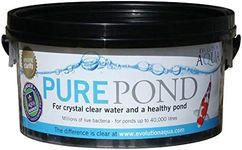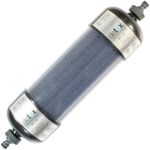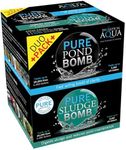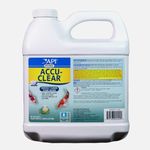Buying Guide for the Best Pond Treatments
Choosing the right pond treatment is essential for maintaining a healthy and balanced aquatic environment. Whether you're dealing with algae, murky water, or fish health issues, understanding the different types of treatments and their purposes will help you make an informed decision. It's important to consider the specific needs of your pond, such as its size, the types of plants and fish it contains, and the particular issues you're facing. By evaluating these factors, you can select a treatment that effectively addresses your pond's unique challenges while promoting a thriving ecosystem.Type of TreatmentPond treatments come in various types, each designed to address specific issues such as algae control, water clarity, or fish health. Understanding the type of treatment you need is crucial because using the wrong one can be ineffective or even harmful. Common types include algaecides, beneficial bacteria, and water clarifiers. Algaecides are used to control algae growth, beneficial bacteria help break down organic waste, and water clarifiers improve water clarity by clumping particles together for easier removal. To choose the right type, identify the primary issue in your pond and select a treatment that targets that specific problem.
Pond SizeThe size of your pond is a critical factor when selecting a treatment because it determines the amount of product you'll need. Treatments are often dosed based on the volume of water, so knowing your pond's size ensures you apply the correct amount. Ponds can range from small garden features to large natural bodies of water. For small ponds, treatments are usually straightforward and require less product, while larger ponds may need more precise calculations and larger quantities. Measure your pond's dimensions and calculate its volume to ensure you purchase enough treatment for effective results.
Water ChemistryWater chemistry involves the pH, hardness, and nutrient levels in your pond, which can affect the efficacy of treatments. Some treatments work best within specific pH ranges or may alter the water chemistry themselves. Understanding your pond's current water chemistry helps you choose a treatment that will be compatible and effective. Test kits are available to measure these parameters, and it's advisable to test your water before applying any treatment. If your pond has specific water chemistry needs, select a treatment that either maintains or adjusts these levels appropriately.
Fish and Plant SafetyEnsuring the safety of fish and plants in your pond is paramount when choosing a treatment. Some chemicals can be harmful to aquatic life, so it's important to select products that are safe for the species you have. Treatments are often labeled with information about their safety for fish and plants, so read these labels carefully. If your pond contains sensitive species, opt for treatments that are specifically designed to be gentle and non-toxic. Consider the types of fish and plants in your pond and choose a treatment that will not harm them while addressing your pond's issues.
Application MethodThe method of applying a pond treatment can vary, and choosing the right one can affect the ease and effectiveness of the treatment. Common application methods include liquid, granular, and tablet forms. Liquid treatments are often easy to apply and disperse quickly, making them suitable for immediate results. Granular treatments can be spread over the pond surface and are useful for targeting specific areas. Tablets are convenient for slow-release applications. Consider your preference for application and the specific needs of your pond when selecting a treatment form. Choose a method that you find manageable and that suits the treatment's intended purpose.














